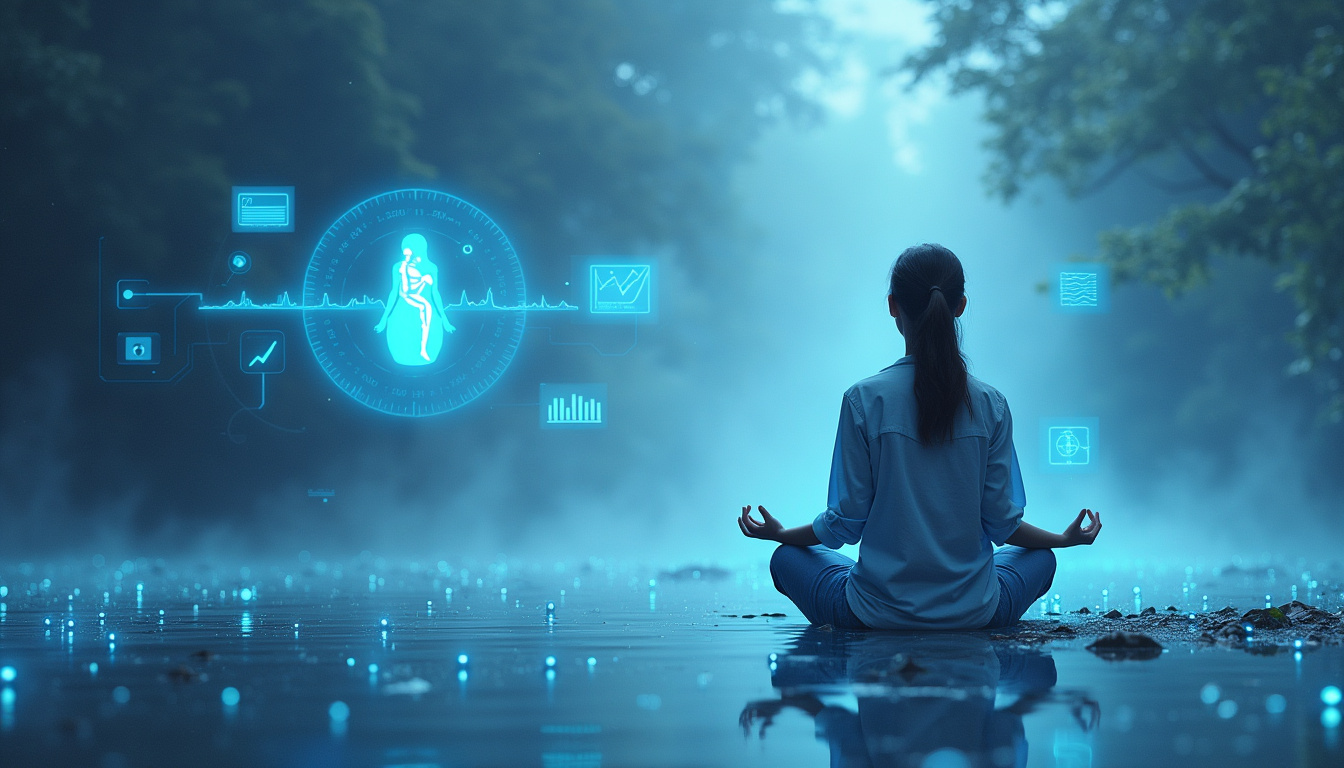1. Wearable Tech: Insights into Personal Wellness
Wearable devices now offer a range of health monitoring capabilities beyond step counting.
“Wearable devices have the potential to provide continuous, real-time physiological data that could transform our understanding of health and disease.” – Dr. Euan Ashley, Professor of Medicine at Stanford University, in a 2021 Nature Medicine article
Modern smartwatches can monitor various physiological markers, including heart rate variability (HRV). HRV refers to the variation in time between each heartbeat and is considered an indicator of the body’s autonomic nervous system function. According to a 2018 review in the Journal of Clinical Psychology, HRV is influenced by various factors including stress, age, fitness level, and sleep quality.
How Wearables Might Support Holistic Health:
- Health Awareness: Tracking health markers may increase overall health awareness
- Sleep Insights: Sleep stage analysis could help users understand their sleep patterns
- Stress Management: HRV monitoring might assist in recognizing stress responses, though interpretation should consider multiple factors
A 2019 study titled “Harnessing wearable device data to improve state-based detection of health and behavior change” in npj Digital Medicine found that wearable data could potentially help detect some health conditions earlier. While this study wasn’t specifically focused on holistic health, its findings suggest potential applications in preventive care and personalized health management, which align with holistic health principles.
2. Virtual Reality: Exploring Possibilities in Mind-Body Therapies
Virtual Reality (VR) technology is being studied in various health applications, including some areas related to holistic health.
“VR has shown promise in areas like pain management and exposure therapy, but we need more rigorous studies to fully understand its potential benefits and limitations in healthcare.” – Dr. Brennan Spiegel, in an interview with STAT News, 2019
Potential VR Applications in Holistic Health:
- Pain Management: A 2020 systematic review in the Journal of Pain Research found that VR may be effective for acute pain management, though more research is needed for chronic pain
- Meditation: Some studies are exploring VR environments for guided meditation practices
- Stress Reduction: Immersive natural environments in VR are being studied for potential stress-reduction effects
While these applications show promise, it’s important to note that VR is still a relatively new field in healthcare. More research is needed to fully understand its efficacy, optimal use cases, and potential limitations in holistic health contexts.
3. AI-Assisted Nutrition: Supporting Dietary Choices
Artificial Intelligence is being incorporated into some nutrition apps, offering personalized dietary suggestions based on user input.
“AI has the potential to revolutionize personalized nutrition, but its effectiveness depends on the quality of data and the expertise behind its development.” – Dr. David Katz, in a 2020 article in the American Journal of Health Promotion
How AI Might Enhance Nutrition Planning:
- Meal Suggestions: Some apps use AI to create meal plans based on dietary preferences
- Nutrient Tracking: Advanced apps can analyze food logs to provide nutritional feedback
- Recipe Modification: AI algorithms can suggest healthier alternatives to recipes
A 2020 systematic review titled “Artificial Intelligence in Nutrition Research: A Systematic Review” in the Journal of the Academy of Nutrition and Dietetics highlighted the potential of AI in nutrition research and practice. However, the authors noted that the quality of AI recommendations depends heavily on the quality and comprehensiveness of the data used to train the algorithms. Users should approach AI-generated nutrition advice with this limitation in mind.
4. Telemedicine: Expanding Healthcare Access
Telemedicine platforms are increasing access to healthcare services, potentially including some holistic health practitioners.
“Telemedicine can increase access to care and facilitate patient and provider satisfaction.” – American Medical Association, “Telehealth Implementation Playbook”, 2020
Potential Benefits of Telemedicine in Holistic Health:
- Nutritional Counseling: Virtual consultations with nutritionists are becoming more common
- Mind-Body Practices: Some practitioners offer guided meditation or yoga sessions online
- Herbal Consultations: Herbalists may provide virtual consultations and follow-ups
A 2020 systematic review titled “Telemedicine and Holistic Health: A Systematic Review” in the Journal of Alternative and Complementary Medicine found that telemedicine can be effective for certain holistic health interventions, particularly in areas like nutrition counseling and stress management. However, the authors noted that telemedicine is not a replacement for in-person care, especially for practices that require hands-on treatment or physical examination.
5. Biofeedback Devices: Learning About Physiological Responses
Biofeedback devices provide real-time information about certain physiological processes, which may be useful in some holistic health practices.
“Biofeedback can be a useful tool for some individuals in learning to recognize and potentially influence their physiological responses.” – Mayo Clinic, “Biofeedback”, 2021
Potential Biofeedback Applications in Holistic Health:
- Stress Management: HRV monitors may help users learn about their stress responses
- Meditation Support: Some EEG devices provide feedback during meditation exercises
- Breathing Techniques: Respiration sensors can guide breathing exercises
A 2018 review titled “Heart Rate Variability: A Review of the Literature” in the Journal of Clinical Psychology found that HRV biofeedback may have potential benefits for stress management and emotional regulation. However, the authors emphasized that HRV is a complex measure influenced by multiple factors, and its interpretation should be done cautiously and in context.


